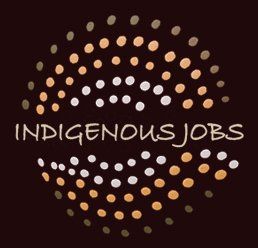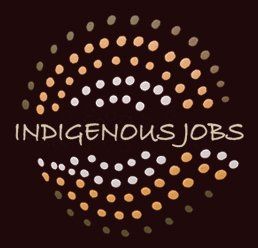What defines an inclusive leadership practice?
From championing active listening to changing the way leaders define conflict. Experts share top tips for HR professionals to facilitate inclusive leadership in their organisations.
The word ‘inclusivity’ is often bandied about in conversations about management. However, it’s one thing to aim for inclusive leadership, but another thing to actually achieve it.
Often with the best of intentions, organisations miss the mark when it comes to developing and promoting inclusive leaders, which can impact the employee experience and significantly hamper an organisation’s end goal.
At a virtual session at AHRI’s Diversity, Equity and Inclusion (DEI) conference last week, Karlie Cremin, Managing Director of Dynamic Leadership Programs Australia (DLPA), spoke about the things she believes HR professionals can do to facilitate more inclusive leadership practices in their organisations. Here are some takeaways from the session.
1. Be champions for active listening
Self-awareness and active listening should be the starting points to inclusive leadership, says Cremin, as they provide a robust foundation to layer other skills onto.
However, actively listening isn’t a skill we teach most managers.
“Where organisations go wrong is thinking, ‘To be inclusive, a leader needs to be more empathetic, so I’m going to teach them to be more empathetic,’” she says.
But it’s not necessarily possible, and certainly not efficient, to teach someone how to be empathetic.
Instead, there’s an alignment between the goals of the speaker and the listener, so both parties are clear on what they’re hoping to achieve by having the conversation.
“This gives the leader access to the empathy they do have,” she says. “If you’re really listening to someone, and really engaging with what they’re saying, you’ll naturally move towards recognising where they’re coming from and understanding how they’re feeling.”
In a previous article for HRM, Dr Benjamin Symon, a simulation consultant at Queensland Children’s Hospital and a paediatric emergency physician at the Prince Charles Hospital in Brisbane, described active listening as “giving people the space to reveal what matters to them most”.
“There’s a generosity of spirit in genuinely and compassionately giving someone else the time to express what they need to without intervening,” said Symon.
He believes it’s equally important to understand the type of listening that’s needed from you, referring to research from Graham D. Bodie, Debra L. Worthington and Christopher C. Gearhart, which suggests there are four different listening styles. They are:
- Analytical listening – “This is when you’re trying to listen to a problem or a conflict with an open mind, and working to avoid any initial prejudices or taking a particular side,” said Symon.
“It’s quite a slow, methodical and time-consuming process to listen in that way. It takes a lot of work, but it can lead you to unexpected conclusions.”
- Task-focused listening – This style prioritises efficiency and is about listening with a clear goal in mind.
“It can be very effective in the right setting, such as in an emergency. If someone calls the fire department, for example, that team is going to want rapid and vital bits of information. They’re not really focused on how people are feeling right now. They want to know where the fire is, is anyone in danger, what’s the address, and how long is it going to take us to get there?”
It can be a less effective style in situations where people need to feel heard, Symon added, as it often leads to listeners “exerting their authority to the point where they sabotage the speaker’s needs”.
- Relational listening – “This is when the listener is trying to understand the emotions behind the speaker to form a meaningful connection.
“These are the conversations where you can walk away from a coffee with someone and have a better sense of where their emotional state is at, even if they haven’t explicitly named their feelings,” he says.
- Critical listening – “This is when the listener is assessing both the content of the conversation but also the reliability of the speaker themselves. That might sound judgmental, but it’s a really critical skill to have.
“Let’s lean on a stereotype for simplicity. Say you went to a shady car dealership and you used relational instead of critical listening. You could be vulnerable to being taken advantage of.”
Symon says the power of effective active listening lies in being able to match your style to the situation at hand. This is when inclusive leadership is unlocked.
“Say a colleague comes to me and they’re expressing distress because they’re having conflict in their home life. By the sound of things, I need to switch to a relational listening style, where I’m paying attention to their emotions and helping them process that.
“But if I instead start giving feedback on how they might be contributing to those problems, try to analyse what’s actually wrong with their relationship, or steer them towards getting to the point because I don’t see where this is going, I’m applying either critical, analytical or task-focused listening to the conversation when the speaker needs human and emotional connection.”
An inclusive leader might explicitly ask what type of listening is required.
“Sometimes I’ll say, ‘Before we go any further, can I just ask what you’re hoping to get out of this conversation? Do you need me to just listen or are you looking for advice or feedback?’
“We can free ourselves from being a psychic if we embrace an above-the-table approach to communication,” said Symon.
“It’s often those hidden areas of communication that can have the most impact once we master them.”
Learn how Ford benefits from running inclusive leadership listening circles.
2. Change leaders’ relationship with conflict
Cremin believes effective inclusive leaders are those who help their people re-define the perception of conflict.
“A difference of opinion is not a conflict. Even a robust discussion about a difference of opinion is not conflict,” she says.
“It’s important to get your workforce to a place where they can engage with conflict differently, so we have freedom to express ourselves – and differences of opinion are an opportunity for change.”
One way leaders can do this, according to Margit Mansfield, CEO and psychologist at Keogh Consulting, is to think about how they invite healthy dissent into their team meetings.
Oftentimes, employees need to feel invited to share a different opinion or challenge their colleagues on a certain person’s perspective. And inclusive leaders can prompt this, says Mansfield, by asking questions like:
- If we never discussed this again, would everyone feel satisfied that we’ve examined every angle?
- Under what circumstances might this idea not work? When might it be a bad idea to implement this plan?
- Has anything been left unsaid? Is there something we’ve been avoiding?
- What about this plan could go wrong?
“Divergent thinking improves the quality of decisions. Considering new perspectives means it’s more likely the final product will meet the end-user’s needs,” says Mansfield.
“Creating a culture of healthy dissent will improve employee wellbeing and increase productivity. Even though it can feel uncomfortable, in the long run, it’s a win-win situation for both employers and individuals.”
“The easiest way to shift culture… is showing you have a united leadership team, which is evidently committed to inclusivity.” – Karlie Cremin, Managing Director, DLPA.
Further, leaders should resist the urge to resolve all differences, says Cremin.
“Conflict resolution assumes there’s something broken, something to be fixed. Whereas, in an inclusive environment, we’re saying, ‘We’re all different. We want to embrace that difference and harness its value, so we get the benefits of thinking about things differently.’
“It’s okay to end with, ‘We have different opinions, but we can find a way forward that is unified for the organisation generally,’” says Cremin.
Want to help your teams to adopt an effective approach to conflict management? AHRI’s short course on managing conflict and mediation will set you up with the foundational skills you’ll need.
3. Breaking down structural barriers
Cremin says once foundational inclusive leadership skills are embedded, it’s then important to assess any organisational barriers that might be preventing this leadership style from being played out.
“You can have the most inclusive leaders on the market, but if you have structural deficiencies, that leadership can’t be mobilised and [won’t] have an impact,” says Cremin.
However, you don’t always have to reinvent the wheel.
“My recommendation is starting with little things, particularly identifying structural barriers,” she says. “If you’re having high levels of attrition in a certain demographic, work out what’s causing this.”
For example, are prohibitive processes or hierarchical structures preventing inclusive leadership practices from becoming embedded? Or perhaps your leaders are doing all the right things but your broader culture lacks the inclusivity that’s being preached at an executive level.
Conduct an audit of the context that your inclusive leaders are operating within to ensure you’re setting them up for success.
4. Keeping inclusivity accountable
“Absence of accountability will undermine anything you’re doing on the inclusive front,” says Cremin.
“Without it, it’s unlikely you’ll have a great level of fairness and equity, and it’s unlikely people will buy into any DEI initiative that you’re rolling out.”
Ensuring accountability might include having short and medium-term action plans outlining the steps you’ll take as a company in three, six and twelve months, for example, so you can map out the expected journey in a transparent manner.
Training leaders to be inclusive is one of the quickest and most effective ways of changing culture, says Cremin.
“The easiest way to shift culture – and in not too much time, as far as cultural change goes – is showing you have a united leadership team, which is evidently committed to inclusivity.”
Source: https://www.hrmonline.com.au/leadership/what-defines-an-inclusive-leadership-practice/

